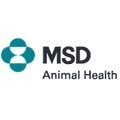 MSD Animal Health (known as Merck Animal Health in the USA and Canada) will present more than 25 studies at the 7th Asian Pig Veterinary Society (APVS) Congress in Manila, Philippines from October 25-27, 2015. The studies are related to the company’s swine products and product-related services, and focus on porcine reproductive and respiratory syndrome virus (PRRSv), porcine circovirus type 2 (PCV2), use of IDAL for intradermal needle-free vaccine administration, and reproductive performance.
MSD Animal Health (known as Merck Animal Health in the USA and Canada) will present more than 25 studies at the 7th Asian Pig Veterinary Society (APVS) Congress in Manila, Philippines from October 25-27, 2015. The studies are related to the company’s swine products and product-related services, and focus on porcine reproductive and respiratory syndrome virus (PRRSv), porcine circovirus type 2 (PCV2), use of IDAL for intradermal needle-free vaccine administration, and reproductive performance.
“MSD Animal Health is committed to providing comprehensive solutions to manage pig herd health,” said Dr. Rika Jolie, DVM, Ph.D., MBA, Global Technical Director, Swine, MSD Animal Health. “We are pleased to share data from these studies at APVS to help producers across the globe, and particularly Asia, improve their approach to prevention and treatment of some of the most serious diseases affecting pigs, and as a result, increase the performance of their farms.”
Abstracts selected for oral and poster presentations are as follows:
Oral Presentation
Respiratory Health

- Comparison of two PCV2 vaccines in a commercial farm in the Philippines (Monday, October 26; 16:30-16:45)
- A field trial of PORCILIS® PCV2 M Hyo in Hungary (Tuesday, October 27; 16:30-16:45)
Poster Presentations
Respiratory Health
- Safety of a new PCV2 and Mycoplasma hyopneumoniae (M. h.) combination vaccine: laboratory and field studies (P60)
- Comparison of PCV2 vaccines in two commercial farms in the Philippines (P63)
- Field comparison of two commercial vaccines for controlling mutant porcine circovirus type 2 viremia (P26)
- Field comparison of PCV2 vaccines: A retrospective production data analysis (P27)
- Apparent absence of PCV2 exposure in a CIRCUMVENT® PCV M vaccination timing field study (P28)
- Utilization of laboratory testing for monitoring Porcine Circovirus type 2 vaccination programs (P29)
- Outbreak and fade out of a genotype 2 Porcine Reproductive and Respiratory Syndrome virus in three German SPF-herds: Role of vaccination and herd closure (P30)
- Genetic evolution of PRRSv in pigs vaccinated with modified live PRRS vaccines of Type I in comparison to Type II in Thailand (P31)
- Comparison over a 12 month period of Type I and Type II PRRS vaccine in commercial farm infected with Type II PRRSv virus (P32)
- Herd performance and PRRS serological monitoring in farm after an outbreak of PRRS type II in Thailand (P43)
- Piglet strategic vaccination: A tool to control PRRSv infection in the nursery (P33)
- Comparative study between i.d. and i.m. vaccination and the course of diagnostic parameters in PRRSv-negative gilts following vaccination with PORCILIS® PRRS (P34)
- Effect of PRRSv infection on PCV2 vaccination efficacy and measures to control the negative impact (P35)
- Field evaluation of a separate and combined vaccination against Porcine Reproductive and Respiratory Syndrome and Haemophilus parasuis in nursery pigs and serologic profiling of the vaccinated groups using an oligopeptide permease A enzyme-linked immunosorbent assay (P36)
- A clinical case study of Porcine Respiratory Disease Complex involving PRRSv, Mycoplasma and Ascarids (P37)
- Evaluation of welfare aspects in suckling piglets after intradermal vaccine application with the IDAL Injector (P38)
- Practical experience after using IDAL as an alternative to traditional intramuscular vaccination in pigs (P39)
- Serological response of APP unsuspicious gilts to vaccination with PORCILIS® APP (P40)
Reproduction
- Use of buserelin in nulliparous and multiparous sows: Effect on the reproductive system and weight variability of the resulting offspring (S9)
- Implementation of a single fixed-time AI in weaned sows (S8)
- Insemination and heat detection cost in Spanish sow farms (S10)
- Utilizing a progesterone ELISA in gilts to augment the use of P.G. 600® and MATRIX® (S11)
Other Topics
- Contribution of SERASCA® serology and coprology to study the risk factors of internal parasitism of gilts in industrial swine farms (P41)
- Comparison between white spots in the liver and serological response in the SERASCA® test as a consequence of Ascaris suum infections in Danish finishing herds (P42)
- Efficacy of a novel Enteropathogenic Escherichia coli/Clostridium vaccine: Induction of protective antibodies (S12)
October 26, 2015 - MSD



